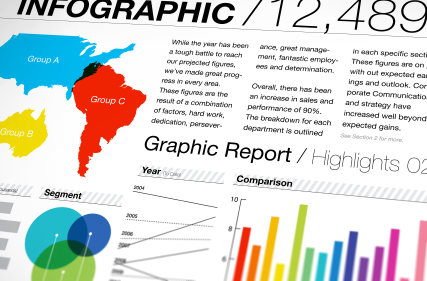Do you need an infographics strategy?
Craig DeLarge examines how pharma can capitalize on yet another new media trend.

Just when we are overrun with the need for content & media strategies of every type from search to email to website to video to social to mobile, now we have the opportunity to contemplate an infographics strategy. Infographics (a.k.a., information graphics) are a not so much a "new" as a "recently repopularized" visual communications medium that I think of as a cross between prose article, powerpoint slide deck and wall poster. Lately I have mostly experienced these on the newly popular social media platform, Pinterest, which I understand is now only third to Facebook and Twitter is its prolific usership. This, to me, is further proof of the emergence of a post-literate society full of aliterates. Its not the end of the world but rather the reestablishment of a world gone by, but more about that in a different blog post.
As I peruse Pinterest (as well as Facebook, LinkedIn and G+) I am amazed at how frequent and inventive the presence of infographics are, and yes, especially in the health and technology spaces. Here I have prepped a delicious bookmark list of my favorites just to give you some examples.
As I interact with communications form, it occurred to me that a brand or company could do well by deliberately publishing and distributing infographics that represent key disease demographics, disease state, company and product information, which now resides on our websites & brochures, in this relatively more engaging, and more importantly, shareable (See my blog post on Shareability as a Social Media Strategy post.) format. I think that such an approach has the potential to see more of our content seen by more of our customers and stakeholders, significantly further afield of our traditional content destinations, and this is a good thing!
It further occurred to me that more of our website content might be consumed more regularly and intently, if designed in more interesting infographic formats, versus the prose/image approach that is the current fashion.
So why do I suggest a strategy is needed here? Well, considering that the whole purpose of strategy is to gain advantage in a competitive situation, such is the need to leverage this trend to better educate and serve our customers and stakeholders who are being exposed to other engaging information that too much encourages them against good health practices.
Though this idea has only occurred to me in the last 48 hours and more thought will be put to this, I can see that any strategy will involve: 1) content planning to determine which content is best suitabed to infographic conversion, 2) devising a common infographic branding & graphical vocabulary so that your infographics are easily associated with your issue, company and brand, 3) development of a content placement & distribution plan to assure that your infographics are most relevantly placed in, and distributed to those customers and customer destinations where they are able to offer the best value.
Well, all this said, I guess I better go and start working on this where I live. I am very interested in hearing about healthcare infographic artists you would recommend as well as examples of well done infographics I can continue to add to my collection. Please also reach to me if you have additional ideas to further shape out thinking on this topic. I am always happy to hear from you at cadelarge@yahoo.com.
